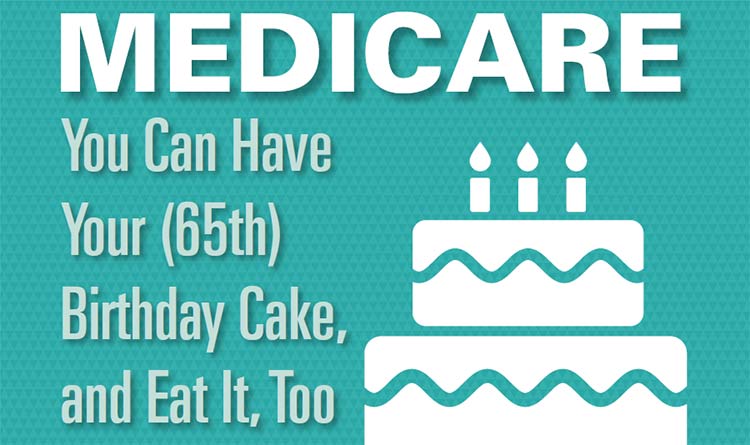
You’re approaching the age of 65, and though you might be dismayed by the vast number of candles on your birthday cake, at least your health care costs are about to drop in a dramatic way. From now on, your medical costs will be covered by the Medicare program.
There are some basic facts you should acquaint yourself with before you turn your health care over to the federal government, however. How much will Medicare cost you, how do you pay for it and what does it cover? What exactly are Parts A, B, C and D? Can you get coverage for dental and vision services? And what if you want to keep working past your 65th birthday?
According to Dora Wilson, plan chief operating officer with Molina Healthcare of South Carolina, you can start receiving the insurance benefits of the Medicare program on the first day of the month you turn 65. If you are already getting Social Security payments, you will be enrolled in Part A – hospital insurance – automatically, and it will cost you nothing. Part B – visits to the doctor and other services – will be deducted from your Social Security payment. In 2016, the cost for Part B for most people rose from $104.90 to $121.67 per month. Depending on your income, you might have to pay as much as $389.80 a month for Part B coverage.
Part A pays for 90 days of hospital care for each “spell of illness” and an additional lifetime reserve of 60 days. It covers a wide range of services and medical supplies but not experimental treatments or procedures.
Part B pays for visits to the doctor, various tests and treatments and ambulance transportation.
What if you decide not to take Social Security until you’re 66 or even 70 years old? In that case, Wilson said, you’ll have to pay Medicare or a Medicare Advantage Plan – also known as Part C – directly for your insurance until you start receiving Social Security checks. You can enroll in Medicare, but not a Medicare Advantage Plan, by visiting or calling your local Social Security office or at www.ssa.gov.
“A Medicare Advantage Plan is usually underwritten by a company such as Humana, Aetna or United,” Wilson explained. “Basically, the government gives those insurance companies the premium, and they manage the costs for the patient. The surplus goes into extended benefits for the patient. It’s kind of like an HMO.”
Those extended benefits might include vision and dental insurance, which Medicare does not provide. However, you should be aware that your out-of-pocket expenses with a Medicare Advantage Plan might be higher than under Medicare and that a MAP might limit you to visiting only specific doctors and hospitals.
Should you sign up for Part B while you are still working? Wilson pointed out that your decision should depend on whether the company you work for has more than 20 employees. In that case, your employer’s group health plan will be the primary insurer, and, when you retire, you’ll have eight months to sign up for Part B without paying a penalty. If you work for a company with fewer than 20 employees, you should enroll in Part B.
“A really good idea is to get long-term care insurance before you turn 65,” Wilson said. “You hear stories about people exhausting all their savings, leaving their spouse destitute. Go ahead and invest in a long-term care insurance policy. It can save you from financial ruin.”
That’s important because people who don’t sign up for Part B when they become eligible might have to pay a 10-percent premium penalty per year.
The insurance coverage for Part D – which pays for outpatient prescription drugs – is offered through private insurance companies that contract with the federal government. If you have Medicare, you can choose a stand-alone Part D plan, while many Medicare Advantage Plans offer prescription drug coverage.
They might charge you an additional premium for this coverage, however.
Another option to consider is a Medigap plan, which you can purchase from a private insurance company to pay your Medicare deductibles, co-insurance and co-payments. Premiums vary, so shop around for the policy that works best for you.
With Part B, Medicare recipients are responsible for a $166 deductible in 2016. Once the deductible is met, Medicare pays 80 percent of what it considers a “reasonable charge,” which usually is less than the health care provider’s normal fee. Whether the patient has to pay the difference depends on whether the health care provider accepts assignment, which means he or she agrees that the total charge is the amount approved by Medicare. In that case, Medicare pays the provider 80 percent of the approved amount, after subtracting the part of the annual deductible that hasn’t been met. The provider charges the patient the remaining 20 percent of the “reasonable” charge, plus the deductible not yet met.
All this is reason enough to purchase a Medigap plan. What else do people need to know about protecting financial assets that can be wiped out by medical issues?
By Brian Sherman






